The Ultimate Guide to Content Marketing For Your Business

Table of Contents
- The Importance of Content Marketing Strategy
- Types of Content Marketing
- How to Create a Content Marketing Strategy?
- How to Plan your Content Production?
- Key Takeaways
- Conclusion
- FAQs
From the importance and benefits of content marketing to its various types, this ultimate guide to content marketing will tell you all you need to know about getting started with content marketing in your organization.
When we hear ‘content marketing,’ our mind immediately races to sensational elements like viral videos, tweets, or advertisements that break the internet. This ultimate guide to content creation details how the essence of content marketing lies in the art of storytelling.
Content Marketing Institute skillfully defines the term as ‘a strategic marketing approach that focuses on creating valuable and relevant content, distributing it to a specific audience, and, ultimately, driving profitable customer action’. This implies that content marketing is a long-term strategy that seeks to nurture customer relationships. So, just a viral post or a groundbreaking blog isn’t going to pass muster. Content marketing means the constant and consistent creation of content that represents your brand and, at the same time, stays relevant to your target audience. To streamline your content marketing strategies for 2022, we have created this practical content marketing guide for you.
There was a time when outbound marketing activities used to be successful (mainly before the internet became so heavily accessible). Now, with changing demographics, your customers might not resonate with content that interrupts them. And that’s what outbound marketing or the more traditional forms of marketing like TV commercials, radio ads, flyers, catalogs, etc., is known for doing; it tends to sometimes bombard or interrupt a brand’s audience with content they don’t want or wish for.
This is the era of inbound marketing, which seeks to create value for audiences, understand their needs, and resolve issues. This can be achieved by creating a narrative tailored to their requirements, or they can relate to.
The Importance of Content Marketing Strategy
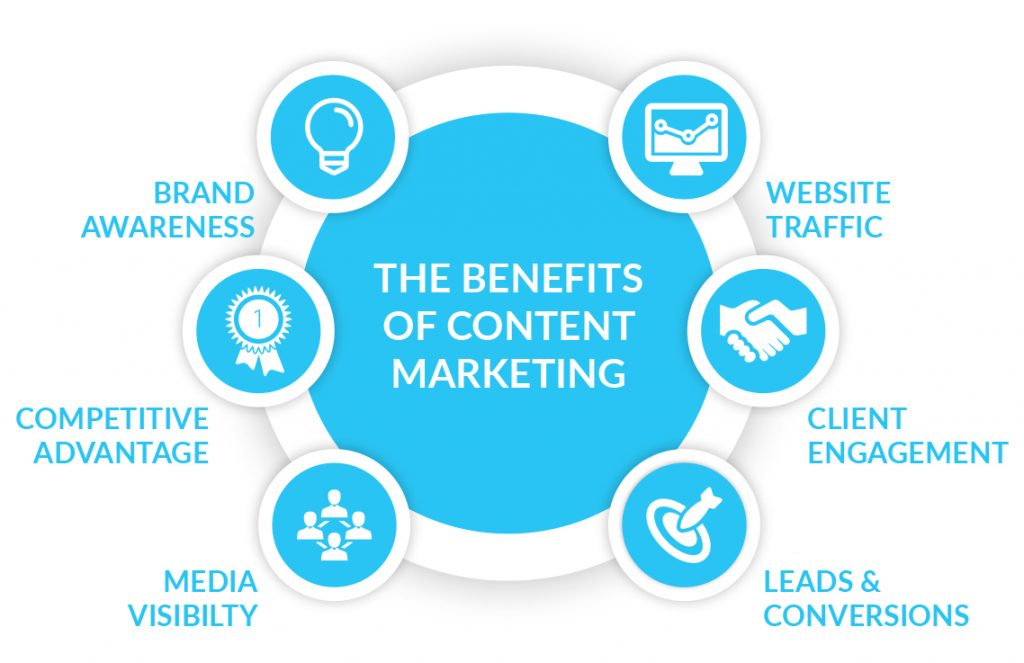
As the world gets more raucous with each passing day, attention and loyalty have become the most valuable assets today. Your brand needs content that interacts with your audiences and has a lasting impact. This ultimate guide to content marketing outlines this very process of attracting, engaging, and nurturing your target customers by using the right type of content. This, in turn, results in higher engagement, better conversations, brand loyalty, and eventually, higher conversion rates.
The key benefits that your brand can reap with strategic content marketing include:
- Saving costs and augmenting sales
- Giving your brand higher visibility in search engines
- Improving brand reputation and customer relationship
- Building a long-lasting and dependable relationship with your customers
Types of Content Marketing
There are various types of content marketing that you may opt for. A few common ones are listed below:
1. Blog content marketing
A blog provides a lot of flexibility in creative direction and topics. This ultimate guide to content creation emphasizes that brands can promote external and internal content and even add product information. Brands can also touch upon social issues and create shareable content while organically promoting their content. By adding the option of sharing a blog on social media platforms, brands can ensure more visibility for their online content.
2. Social media content marketing
This content marketing guide warns you against underestimating the power of social media in boosting business growth. Social media can help you reach countless people across the world. A social content strategy looks at platforms like Facebook, Twitter, Instagram, LinkedIn as distribution channels for your content and involves creating and curating content exclusive to those individual platforms. It is about recognizing the needs of the customer and the platform where they might be present and engaging with them in a language that they understand.
3. Video content marketing
This ultimate guide to content marketing stresses the importance of video content marketing. Videos are one of the most engaging ways to reach out to customers. According to Wyzowl.com, 85% of businesses use video as a marketing tool, and 66% of consumers prefer watching videos to reading about a product. Why are videos so effective? They play with the visual and acoustic parts of a user experience. They communicate the features of the product faster and have higher retention rates. Other benefits include an improved ROI and a more engaging relationship with your target audience. As a brand, you can publish your videos on various social media platforms, website landing pages, or even on third-party platforms.
4. Podcast content marketing
This trend has only recently gained popularity in the world of social media. Statistics from Edison Research suggest that podcast listeners have grown by 37.5% in the last three years. Podcasts accumulate a growing audience and could be an excellent medium for brands to communicate with their leads. Creating podcasts can give your brand a creative edge and earn better customer engagement. Brands can pick any topic of their choice and add value to a podcast by inviting well-known guests to their show. Some exciting podcasts include:
- This Old Marketing
- The GaryVee Podcast
- Marketing School with Neil Patel & Eric Siu
- Advertising is Dead
- Pepper Spotlight
5. Infographic content marketing
A tip to note from this content marketing guide is to use infographics. Infographics make it easier for your customers to understand your business’s more complex aspects like statistics and comparative analysis. In 2020, 67% of B2B marketers will use infographics. By complementing infographics with short and crisp textual content, your brand can effectively communicate with target customers. This type of marketing can be advantageous if your brand produces educational content or deals with complex topics.
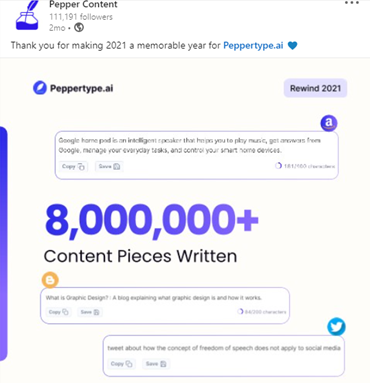
How to Create a Content Marketing Strategy?
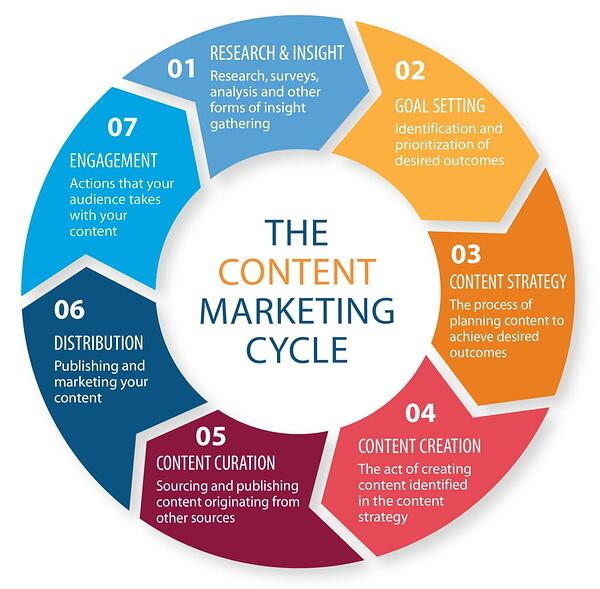
Once you discover what content marketing means for your brand, you are all set to draw up a plan. The following steps are essential for creating a robust content marketing strategy for your business:
1. Set a goal that suits your vision and brand identity
Setting goals is one of the most complicated parts of devising a content marketing strategy. The ultimate guide to content marketing says that your marketing goals should complement your campaign goals and align with your company goals as well. For example, creating brand awareness can be an important goal for a company at all stages. More objectives can be hitting a higher conversion rate, boosting brand loyalty, attaining consumer trust, attracting investors or strategic partners, and improving customer engagement. To set concrete goals, remember to add substantial numbers. For instance, instead of ‘high conversion rate,’ aim for ‘increasing conversion rate by xx%’. A practical method to set goals is by making sure they are SMART goals:
- Specific
- Measurable
- Attainable
- Relevant
- Time-based

2. Plan your KPIs
Once you have your goals in place, the content marketing guide tells you to determine the parameters that can help you quantify and measure your success (or failure). With the help of Key Performance Indicators (KPIs), you can measure your performance and see if you are closer to achieving your goals. For example, brand awareness can be effectively measured by the traffic on a website, the number of followers on social media, the number of monthly subscriptions. Some KPIs could increase brand loyalty, including the number of recurring customers, referrals, promoters, and product reviews.
3. Determine the type of content
You now know that there is a variety of content that you can create to communicate with your customers. The ultimate guide to content marketing says that with an in-depth analysis of your target audience’s traits, you can ascertain the type of content that will resonate with them. Refer to common questions like:
- What does your target audience need from your brand?
- How can your product/service help them succeed?
- What value does your brand add to their life, and who needs it the most?
- How and where is your target audience spending their time?
- What challenges are they looking to overcome, and how can your brand help them?
The answers to these questions will help you create the right kind of content for your target audience.
For instance, if your product is a cloud-based accounting app catering to C-level executives who read a lot of data, perhaps an infographic that elaborates on the adoption of cloud-based services by B2B companies would resonate with your audience. Alternatively, if you’re a B2C make-up brand, perhaps a short video on DIY makeup tips will hit the spot for your chosen target audience.
4. Decide on your platforms for launching content
Now that you know how your target audience spends their day, you have to decide on the media to reach them. Content can be marketed on various platforms, so your medium of choice will fundamentally depend on your individual brand goals and target audience traits. Different mediums will help you meet different goals, so do not limit your content to one marketing platform. Here are a few pointers to help decide the perfect platform for your content:
- Keep in mind the nature of your business: For instance, B2B brands might see more benefit in being on LinkedIn than on Pinterest.
- Recreate content as per the platform: You could repurpose a blog post into a carousel on Facebook and Instagram. A video could be split into smaller bites for various platforms.
- Know your audience: From designation to age to geography and interests, knowing your core target audience will help you find the proper channels and partnerships, create targeted content, and even target your ads appropriately.
- Know thy platform: Do you know what demographic Facebook caters to vs. Snapchat? There is a world of difference, and as a marketer, you must know where those differences lie.
5. Fix a budget that suits your goals
In this guide to content marketing, we highlight the importance of setting a budget. Depending on the type of content you create and the platforms you want to launch them on, you can now fix a suitable budget. Your budget will depend on the entire procedure of achieving your goals, starting from conceptualizing and creating content to launching and promoting it.
So, check if you need to buy any tools, hire a pool of writers, editors and designers or go for online ads while creating and marketing your brand content. You can ensure a smooth operation for your content marketing plan by considering all such expenses. One important aspect to keep in mind is that no budget is static. You need to monitor and reassess your budget basis your ROI constantly. As per a survey conducted by Content Marketing Institute in 2020, nearly half of B2B marketers expect their content marketing budget to increase in 2021.
6. Produce and promote your brand content
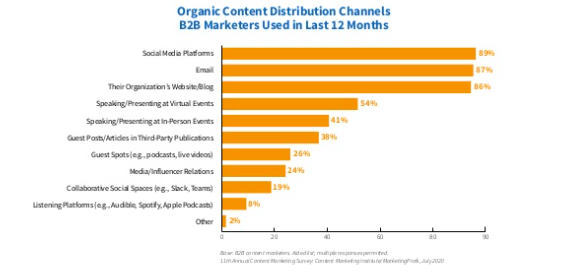
With a budget in place, you must distribute content among your customers. Marketers can use three primary channels to promote their content: Owned, Earned, and Paid.
- Owned: Channels owned by you like blog, newsletter, social media.
- Earned: Third-party sites like press coverage, guest articles, product reviews, etc.
- Paid: Advertising on various online and offline platforms based on CPC (Cost-Per-Click) model.
An effective distribution strategy is a mix of all these three channels. Many brands use a spray-and-pray approach to content. This is not a strategy!
7. Examine and quantify your results
Executing a content marketing strategy is only half of the job. One of the biggest takeaways from this ultimate guide to content marketing is analyzing and measuring your results. This step will help you understand what works for your brand and what does not. Eventually, you can make all the necessary changes in your future strategies. Use your KPIs to understand the results of your content marketing strategies accurately.
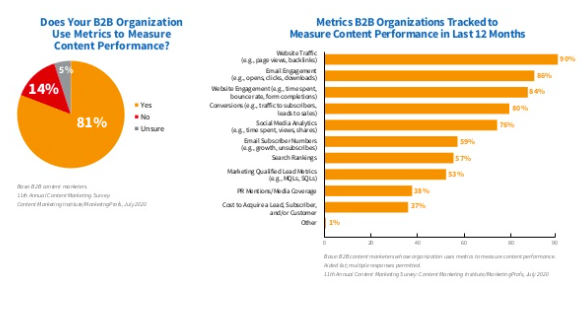
How to Plan Your Content Production?
A robust content production plan is pivotal to any content marketing strategy, regardless of its scale and scope. To reach your customers organically, you need to put out consistent and high-value content, both of which require some degree of meticulous planning. A solid content production plan will ensure that your team has clarity regarding their goals, processes, and timelines and can work seamlessly. The following steps can help you plan your content production in the most efficient way possible:
Clearly define the goal of your content
A significant tip from this ultimate guide to content marketing is setting clear and realistic goals for your content. Without any unnecessary jargon, define your goals so that everyone, from the writer, the designer, the editor, to the website developer, can understand the ultimate goal of content creation.
List down the tasks
Without this, your team is most likely to go haywire with deliverables. By assigning tasks, you set aside time for each step involved. This improves your content quality and results inefficient time management for your team.
Define all the roles in the content production process
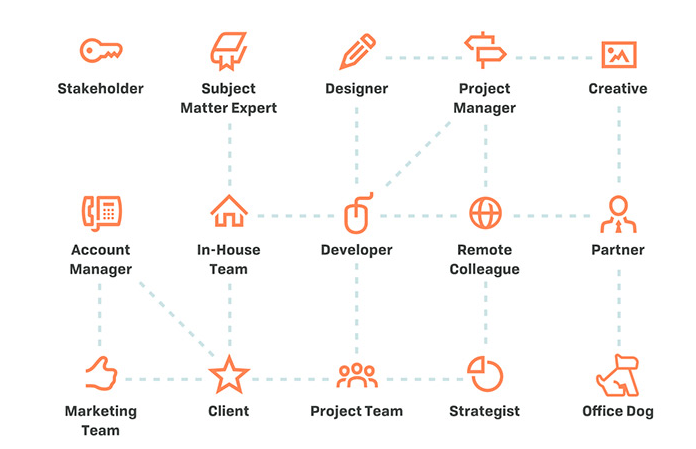
The ultimate guide to content creation mentions that specifying clear responsibilities is ideal for avoiding the blame game. Understand how your content will travel from ideation to execution. This will also allow you to understand the sequence of events and monitor the content creation progress efficiently.
Add timelines and due dates
There should be a clear content calendar. The calendar will deal with the overall project timeline. Calendars are a great way of boosting productivity. When setting up timelines, always leave room for changes and revisions. If a task takes an hour and 15 minutes, round it up to 1.5 hours to give some breathing space between deadlines. Stay in constant touch with your team. Since they will perform the actual tasks, keep them in the loop and review the calendar and suggest changes to it. If you are running out of content ideas, do not fret, for Peppertype.ai has your back. It is an instant content generator powered by Artificial Intelligence. It can help you ideate your content.
Key Takeaways
- As per this ultimate guide to content marketing, you must set realistic goals that align with your brand vision. If you are aiming for a high conversion rate, try to specify for your teammates precisely what percent of high conversions your target is. It will yield better results.
- This guide to content marketing also mentions that you need to track your Key Performance Indicators (KPIs). It is often said that measuring the ROI for content marketing is challenging. If you measure specificities like social media growth or the number of conversions, you can easily understand where you are falling short.
- Another tip to fully optimize the ultimate guide to content creation is to clearly define the goal of your content. Start telling ‘what’ you do, ‘why’ you are important, instead of always promoting your product or service.
- One of the most important tips in this content marketing guide is to list the tasks that need to be done and define the roles accurately. It will help you hire teammates that have specialized knowledge in that area.
- Another essential tip in this ultimate guide to content marketing is always adding timelines and due dates to ensure that the work is done effectively and on time.
- The ultimate guide to content marketing also mentions Peppertype.ai. It is an artificial intelligence-powered instant content generator.

Conclusion
Content can be the face of your brand. It is the story you tell. You can establish an impactful brand identity and earn your audience’s confidence by putting time and effort into your content marketing. So, what are you waiting for? Use the above ultimate guide to content marketing and start reaching your goals! If you can provide meaningful and valuable content that aligns with your brand product or service, your business will grow in no time.
FAQs
Here are five steps to establish a content marketing strategy to perform content marketing efficiently, as detailed in the ultimate guide to content creation above.
– Set your goals
– Define your user personas
– Do a content audit
– Create an editorial calendar
– Create a content infrastructure
Follow the above content marketing guide to nail your content marketing strategy:
– Establish well-defined goals
– Set up Key Performance Indicators (KPIs)
– Picking the right content for each channel
– Set a budget
– Distribute content and examine the response
Content marketing includes everything from blogs, social media content, email content, ebooks and guides, webinars, infographics, etc. Some really good examples include content marketing strategies applied by brands like GoDutch, BoAT, Cure. Fit, Dunzo, Sula Vineyards, etc. This ultimate guide to content marketing mentions the importance of mixing and matching different content types so that the audience does not feel bored.
A few content marketing trends to leverage in 2022 include:
– Focusing on a niche and using long-tail keywords
– Building content communities
– Bringing in expertise and industry focus
– Personalizing your content
– Creating headlines with emotional keywords
A good content strategy streamlines your efforts to generate leads and convert prospects into happy consumers. It works in favor of your business objectives and helps you scale up your business to meet the demands of users. The biggest tip to keep in mind from this ultimate guide to content marketing is to create content that aligns with your target audience’s needs.
Content marketing includes leveraging content in the form of blogs, websites, videos, social media, podcasts, visuals, etc., to convey your brand message and compel customers to know more about your brand and make purchases. The ultimate guide to content creation details the essential steps and facts to keep in mind as you create your content marketing strategy for 2022.
Latest Blogs
Explore how Google’s 2025 AI search updates triggered ranking chaos. Learn actionable strategies to adapt your SEO for AI Overviews, zero-click searches, and SERP volatility. Stay ahead now.
Learn how to rank on AI search engines like ChatGPT, Perplexity, and Gemini by optimizing your content for authority, structure, and relevance. Stay ahead in AI-driven search with this strategic guide.
Explore the best healthcare SEO services for your medical practice. Improve online visibility and effectively reach more patients in need of your services.
Get your hands on the latest news!
Similar Posts

Content Marketing
4 mins read
11 Best B2B Content Marketing Agencies for B2B Companies in 2024

Content Marketing
5 mins read
Top ecommerce Marketing Agencies with Proven Strategies for 2024

Content Marketing
5 mins read